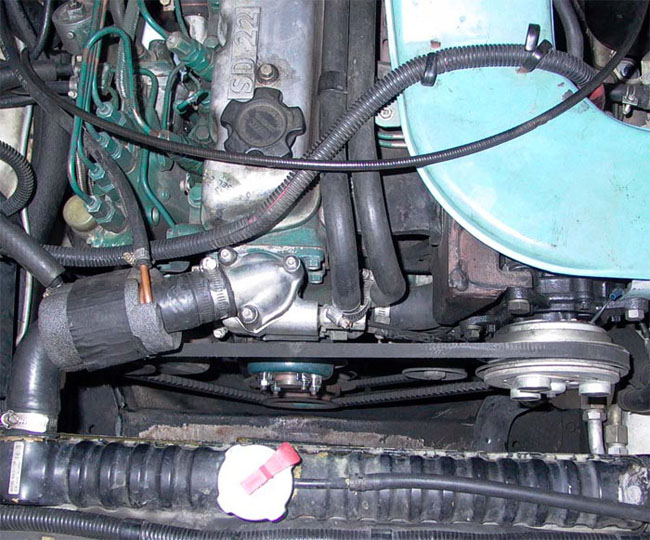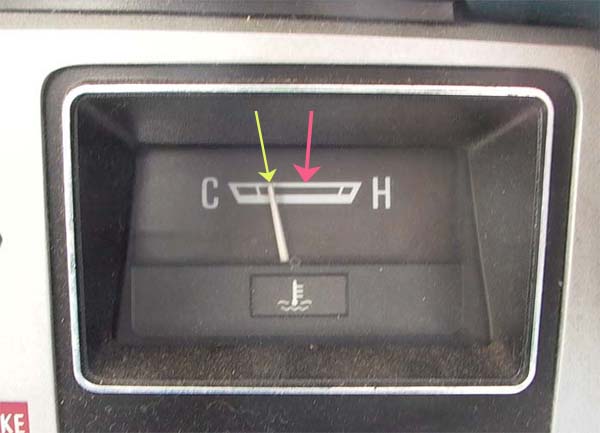For a long time before I got this truck and for the miles I have put on it, the fan belt (crank/alternator/water pump) has required frequent adjustment and twice replacement in 30k miles. Each time there were chunks missing from the inner side of the belt.
Maybe it's my ears ... but for awhile, I began noticing the fan howl would continue LONG after the engine was fully warmed up on cool days. You'd expect continued running at engine speed on hotter days especially with the A/C running.
So I decided one day back about Nov '05 to replace the thermal / viscous drive clutch. Unfortunately, the new fan clutch continued running at engine speed until I had traveled several miles at Interstate speeds. Hmmm. So I called Hayden who had been purchased by some Texas outfit. The new company tech desk told me how to test the clutch ... which I did ... finding the new clutch failed (would not release). I exchanged it for another of the same brand. SAME THING. It appears Hayden is installing a fluid with too much viscosity which keeps the fan engaged far more than required for these small diesels ... even with A/C.
Out of the box, both my old clutch and BOTH new clutches had a LOT of resistance to being turned by hand. I found a used clutch on eBay for an SD22 and bought it cheap ... gambling on what I would get. This used clutch has considerably LESS resistance to being turned by hand. Unfortunately, there is no brand name on it.
In the meantime while I was waiting for this used clutch to arrive, I figured I would try driving around with NO CLUTCH / FAN at all. After all, diesels throw off considerably less heat than gasoline engines when idling and it is (what passes for) winter here in SoCal.
What all that in mind, I put put everthing back together WITHOUT a fan. Found out some interesting things. With the engine at operating temperature and left to idle, it takes 15-20 minutes for the coolant temperature to reach 212 degrees. Even then, I can drop 10 degrees in about 3-5 minutes by turning the heater ON full hot with fan on high setting. Or if I park with the grille into the prevailing breeze, I've idled for 25 minutes. Hmmm!
It's been nearly two months and I still have no fan installed. Fuel mileage at Interstate speeds has increased about 1.5 mpg! No doubt this setup is less stress on the fan belt too.
-Philip

